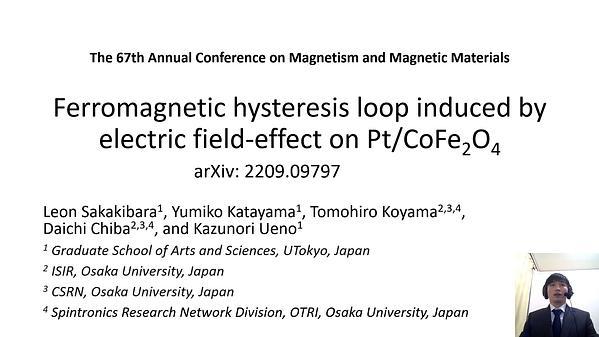Would you like to see your presentation here, made available to a global audience of researchers?
Add your own presentation or have us affordably record your next conference.
2D bi-material artificial spin ice systems have been well studied 1-4 but restricting spins to 2D limits functionality. Extending into 3D provides an extra degree of
freedom, but the underlying physics need deeper understanding. We show how spin stability can be controlled via introduction of mixed materials and overlap layer (OL) in 3D
nanostructures (NS), with potential applications in computation and memory 5.
Self-aligned hexagonally arranged Py and Co NS were fabricated via stepwise nanosphere lithography 6 via a two-step deposition at different orientation. A mixture of Co NS, Py NS and
3D overlapped Co/Py NS (OLNS) comprising of a Co parallelogram on top of a Co/Py base layer is formed (Fig 1a&b).
Magnetization reversal studies were done via MFM. Fig 1c-f show remanant domain configurations at different field values. After +3 kOe saturation (Fig 1c), most Py NS (circled)
reversed at -300 Oe (Fig 1d). At -700 Oe (Fig 1e), a Co NS reversed (circled) while OLNS exhibited stable transition states (arrows). OOMMF 7 simulations showed a Néel wall (circled)
in Fig 2a but none in Fig 2b for NS without OL. Shape anisotropy causes spins in the OL to lie along the geometrical easy axis. Vertical spins of the Néel wall also connect spins in the base
layer and OL via strong exchange coupling, causing in-plane spins to remain unperturbed over large fields.
The in-plane spins were seen in Fig 2a to also pin nearby spins in the base layer outside the OL in the same direction (light blue), resulting in the stable transition state in Fig 1e. In contrast,
reversal begins at the constituent NS' corners without any OL, as seen in Fig 2b (circled).
The tunability of spin stability via OL's shape and area, material and size will be further discussed via experiments and simulations. These interesting static observations in 3D show
promise for new dynamic spin wave propagation behavior in 3D. This study aims to extend well-established static and dynamic magnetic behavior of 2D structures into 3D.
References:
1 A. Rodríguez, L. Heyderman, F. Nolting, Appl. Phys. Lett., vol. 89, p. 142508 (2006)
2 S. Choudhury, S. Saha, R. Mandal, ACS Appl. Mater. Interfaces, vol. 8, p. 18339 – 18346 (2016)
3 A. O. Adeyeye, S. Jain, and Y. Ren, IEEE Trans. Magn., vol. 47, p. 1639 – 1643 (2011)
4 S. Choudhury, S. Pan, S. Barman, J. Magn. Magn. Mater., vol. 490, p. 165484 (2019)
5 S. Sahoo, A. May, A. van Den Berg, Nano Letters, vol. 21, no. 11, p. 4629-4635 (2021)
6 B. Myint, D. Yap and V. Ng, Nano Express, vol. 1, p. 020029 (2020)
7 M. Donahue and D. Porter, OOMMF User’s Guide, Version 1.0 Interagency Report NISTIR 6376 (1999)

